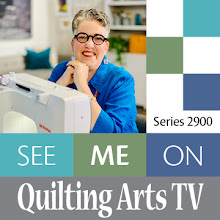This weekend, I got started on my latest piece, which will be pretty large, about 48" square. The sketch above shows what I’m aiming for (except that the background will be black instead of white). I’m going to do it in a pretty realistic way, but change a lot of the original colors.
The piece is based on the photo below, which I took at the zoo in Colorado Springs this summer while on our family vacation. This peacock was uncaged, strolling the lawn, and was initially quite happy to have his photo taken. I was pretty close to him, maybe about six feet away, when he decided that he didn’t like me much. He hissed, and came at me, and I retreated … but not before getting some great shots.

I started by cropping my photo to a square and printing it out 8" wide on my laser printer. After tracing the main lines in the image on tracing paper, I blew up the line drawing in Photoshop to the 48" size I needed. Then I placed this image in InDesign, a page layout program, and drew dotted lines every 8" across and 13.5" down (as the pages would be printed out on 8.5" x 14" legal-size paper). I positioned the sections, one at a time, on the page, and printed each out – a total of 28 sheets. Then I cut and taped them together along the dotted lines. You can see the dotted lines here if you look closely:
Here’s how it looked all together on the work table in my studio:
I placed black fabric on top of this drawing, pinned it to the paper, then positioned a light box underneath, and slid it from section to section, roughly drawing the lines with a mechanical chalk pencil. These lines will help me position the fabric pieces, after I’ve put fusible adhesive on the back of each.
Usually, I trace my lines onto clear upholstery vinyl, and use that as a positioning overlay to place all the fabric pieces correctly. In this case, since the piece is so big, I thought a vinyl overlay might be difficult to use, so I am trying this instead.
Next, I needed to plan how I would color the drawing, since I’m not doing this in the actual peacock colors in my photo. My peacock is going to be kind of technicolor! So I took a copy of my line drawing, and had some fun with my watercolors. (The finished painting is at the top of this post.)

My next step will be to start tracing shapes onto my fusible adhesive. I use Lite Steam-a-Seam 2 from The Warm Company, because it works great for my process. Because it is slightly sticky after you remove the paper backing, it is very easy to position and reposition all the little pieces before you fuse them down. Sometimes I have a lot of little pieces, so this is an important feature for me. I also like the stability that the adhesive provides. Lite Steam-a-Seam 2 is not the lightest fusible adhesive out there – this is a plus if you are going to do a lot of threadwork on top of a piece, because it acts as a stabilizer, too. I will be using interfacing behind this piece to provide additional stability before I stitch; I’m doing all the little strands in the feathers with thread sketching.
By the way, my interest in peafowl goes back to the early 1990s, when my
husband and I rented a late 1700s cottage on the Shadwell Estate.
Shadwell is the land originally owned by Thomas Jefferson’s father, and
where Jefferson grew up, just outside Charlottesville, Virginia. Our
landlord lived in a spectacular mansion built by Jefferson’s
grandaughter, and we lived in the older, smaller house, which we called
Boxbriar Cottage. It was the most amazing place I have ever lived,
surrounded by 20-foot-tall boxwoods, pastures, gardens, enormous tulip
poplars, and woods.
Our landlords had peafowl; not long before we moved
in, their peacock had been killed by an owl. His mate, peahen Emily,
still sauntered the grounds, and we loved seeing her and hearing her
eerie cat-like call in the evenings. When our landlords went out of
town, we were given the job of feeding Emily, who ate quartered grapes,
chopped walnuts and crushed Carr’s Water Crackers. I am not kidding you.
































































